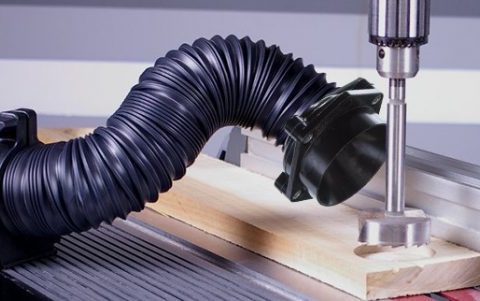Compressed air is a tricky technology to deal with because it is a compressible fluid and is subject to all sorts of things. Yet 70% of all compressed air is still sued for blow-off and cooling because it is versatile. But it can be used more efficiently.
One of those applications that can be much more effective is when using engineered compressed air nozzles. Properly designed engineered nozzles work by entraining surrounding atmospheric air and compressed air to convey energy normally lost as pressure drops and noise. But not all air nozzles are engineered. And some engineered nozzles are not very well designed. This may not matter in small applications, but when you add up the nozles in a large facility, it can be a significant amount of money.
The first thing to decide is if you want to cool a part or clean it. In the first case, flow is more important than force. In the second case, force is more important than flow. Then there is comparing air nozzles. Assuming that manufacturers are honest about their specifications (which is not necessarily the case), you need to look at both force and flow.
This is far more critical when force is required. In this case, the force/unit air consumption is the best thing to look at. The most efficient (and effective) nozzle will have the highest force/unit airflow (Force/SCFM ratio). It does not matter how force can vary among a variety of nozzles because in a proper installation, you use a regulator to cut back the pressure to set the force you need; Force above what you need only uses more energy. But in real life, here is where it gets tricky…
How Piping Can Effect Air Nozzle Performance
Let’s assume you have an installation with a set of nozzles from one supplier. You find a second brand that gives the same force at the same pressure. And the cost for the nozzle is a bit less. You have no regulator on your system. So you replace a few nozzles. But…. then you find that the actual force is less than specified? Yes, according to what you read, it should be the same! What went wrong?
If you check the specifications further, you will find that the replacement nozzles use only 1 SCFM more than the one you are using. It certainly does not seem much, but…. that extra flow going through the piping, which is typically the same size as the nozzle, can cause enough extra pressure drop that the effective pressure at the nozzle entrance is just a little less, which also makes less force. That is how sensitive the nozzle effectiveness can be. So if you are replacing any nozzles, check the force created at a particular pressure and the air consumption at that pressure. The odds are that the pressure at the entrance to the nozzle is NOT the same as you think it is due to pressure drop.
When considering the use of compressed air nozzles, consider the force it produces, usually specified at a particular pressure, and the air consumption.
Nex Flow manufactures products for compressed air blow-off, cleaning, drying, moving, and cooling and also offers related products for filtration and optimization in addition to consultation in their field.
Video url : https://youtu.be/RhjnHSy4_co








